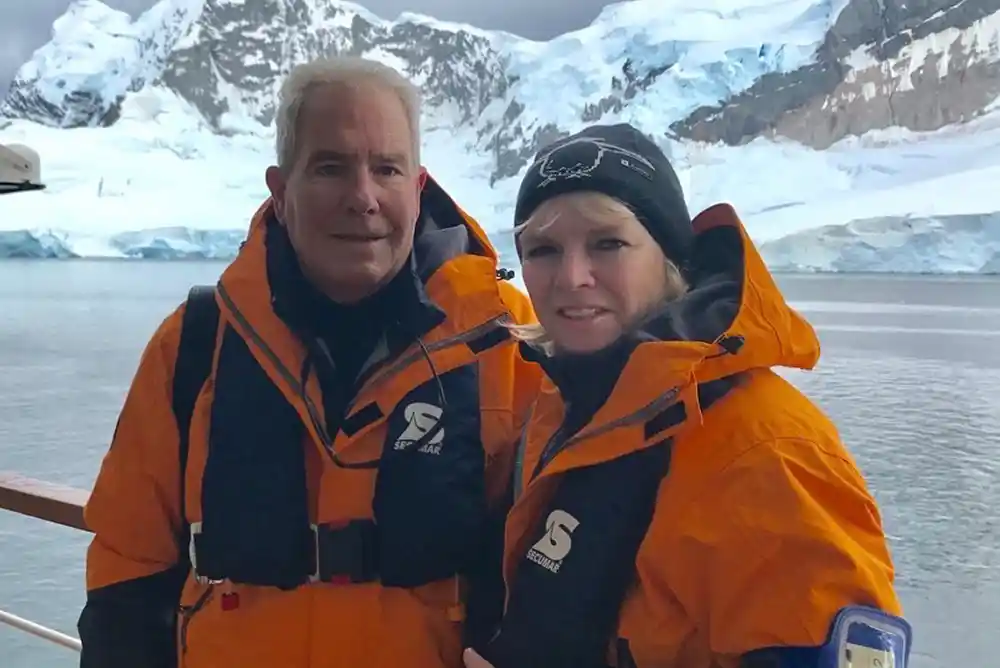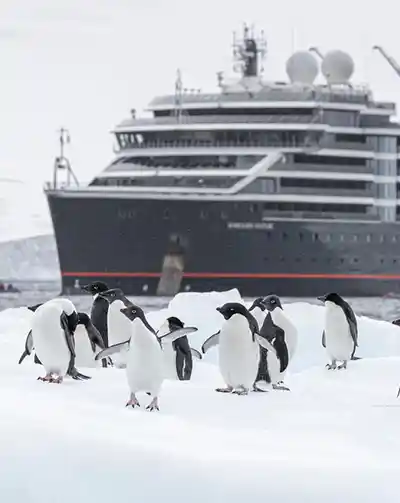
While most of us will never see Antarctica in our lifetime, Dudley and Glenda Spangler have had the opportunity to visit and take in its splendor twice. Lovers of nature, the Spanglers relish Antarctica’s icebergs, scenery and wildlife.
Most recently, the couple began their trek in Buenos Aires. After spending a night there, they flew to the southernmost tip of Argentina, Ushuaia, where they boarded the Seabourn Venture, a 225-passenger exploration ship built for cruising to Antarctica. Their journey would bring them through the Beagle Channel, which takes about four hours, then across the Drake Passage to the peninsula of Antarctica.
“There is no place like [Antarctica] in the world,” said Glenda. “It’s a unique environment that is mostly untouched. It’s a magical place.”

Antarctica is only accessible during the Southern Hemisphere’s spring and summer months, from November to late February. The Spanglers first visited in February, when the scenery was very different. There was less snow, penguins had completed nesting and molting and wildlife was preparing for winter. During their recent spring trek, however, penguins were getting ready to mate, explained Glenda. “They were beautiful and plump,” she recounted.

“The icebergs were magnificent,” continued Glenda. “They were sometimes bigger than the ship,” she said, commenting on their exceptional crystal blue color and unique shape. Because the weather cooperated, the Spanglers visited a Chilean research station during their six days in the Antarctic. They met the four men who lived there for four months out of the year. The Spanglers were Icy expeditions to Antarctica By Isabel Alvarez Arata Walso able to explore approved paths of the zodiacs.
Researchers from the UK research station could not welcome them in their quarters but visited the ship to share their experience living in these research facilities. The Spanglers learned that researchers do not have running water. They eat dry and canned food and share small living spaces with multiple colleagues.
“A highlight was kayaking between huge icebergs and glaciers while seeing all types of wildlife, seals, birds and penguins,” said Glenda. “Life in the Antarctic is all nature,” she explained.
The Spanglers observed penguins setting up large colonies, which is common during mating season. They saw thousands of penguins looking for areas where the snow had melted to set up their dens. “Penguins march in a line, referred to as the Penguin Highway,” added Glenda. “They have the right of way; many times, we waited 10-15 minutes for a break in the highway to cross,” she estimated.
While conditions can be frigid in Antarctica, the Spanglers enjoyed temperatures around 30 degrees Fahrenheit, though high winds made it feel colder.
Crossing the Drake Passage to the Antarctic Peninsula and back to the Argentinian mainland can be difficult. The Drake Passage is colloquially referred to as “Drake Lake” when it’s calm or “Drake Shake” when it’s not. The Spanglers had to travel with 20-plus foot swells while cruising through the Drake Passage in both directions, an experience they will not soon forget. Despite all that, the Antarctic and its penguins have claimed an iceberg-sized chunk of the Spanglers’ hearts; they would not hesitate to return.
By Isabel Alvarez Arata




Leave a Reply